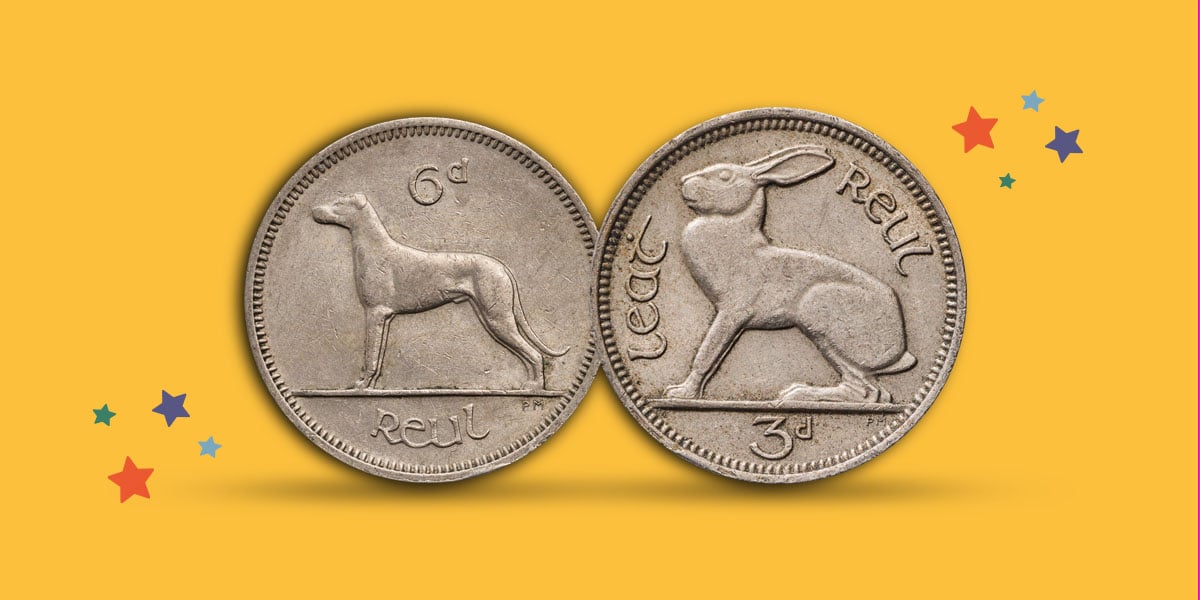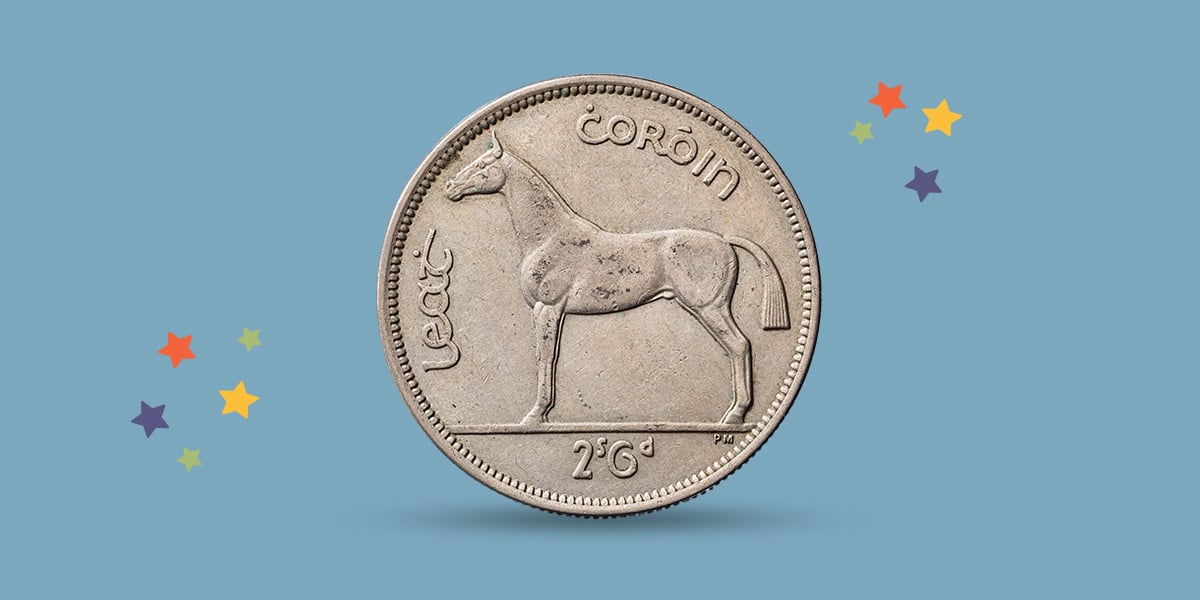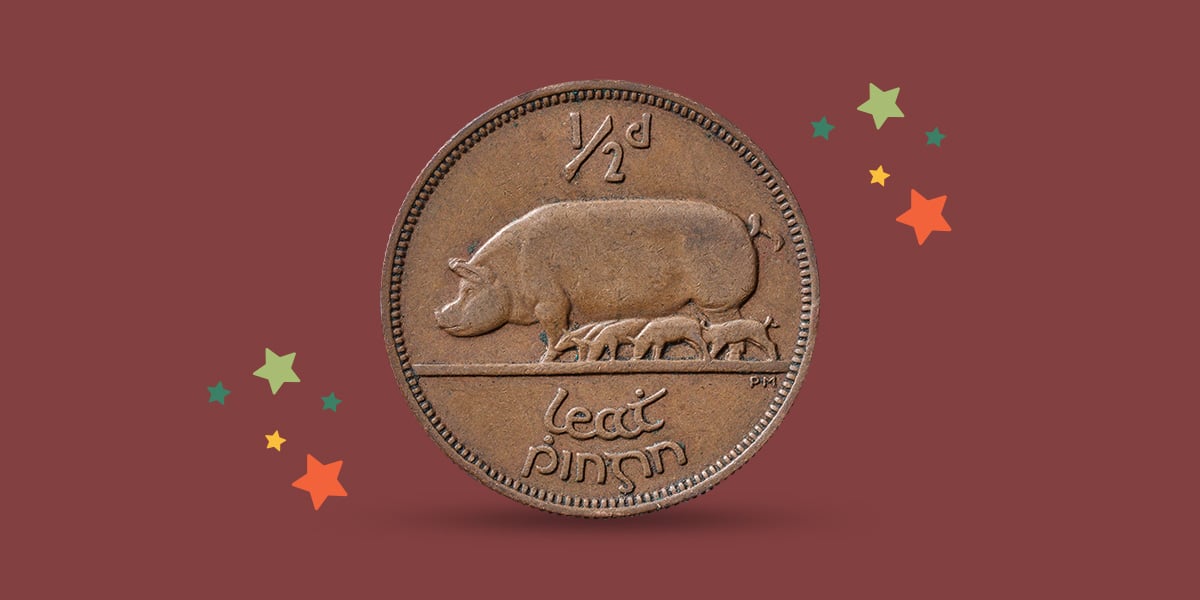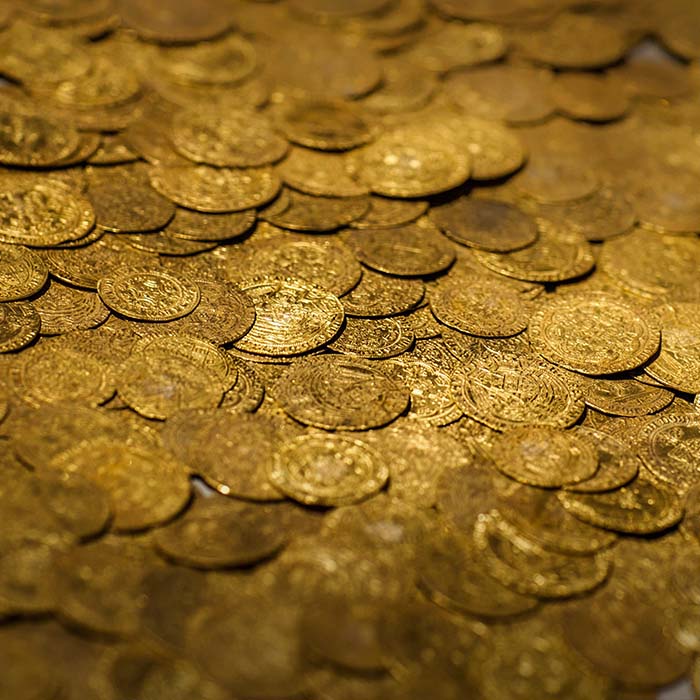Our Animals on Coins Collection is a fun and accessible way to discover the joy of collecting. Animals have been appearing on coins for centuries and one of the most memorable suites of historic coins to feature animals on the reverse were the coins we produced for the Irish Free State. Known by some as the Barnyard Collection, this series of coins featured animals that represented Irish culture and heritage. Artists were presented with examples of animal designs on old Greek coins for inspiration, and work by designer Percy Metcalfe was chosen for all eight designs.
This Animals on Coins Collection takes a closer look at each design and why it was chosen to feature on the reverse of coins such as these, including a beloved favourite that featured on the British farthing.

The Wolfhound Sixpence
The Irish wolfhound has a reputation for its large size and gentle nature, with a lithe muscular body and wiry coat. As its name suggests, this dog was bred to hunt native wolves across Ireland but it was a little too successful at its job.
When wolves became extinct in Ireland towards the end of the eighteenth century, this meant that there wasn’t as much of a need for the Irish wolfhound. Breed numbers began to decline and were nearly eradicated until the Scotsman Captain George Augustus Graham worked hard to revive the breed in the nineteenth century.
Often referred to as a gentle giant because of its calm temperament, the Irish wolfhound is a favoured pet for families and remains a symbol of Irish culture and heritage.
The Hare Threepence
The animals chosen to appear on the coins of the Irish Free State referenced either husbandry or hunting, with the hare one of many that fell into the latter category. There is a native breed of hare in Ireland that is similar in appearance to the mountain hare but is classified as the Irish hare. This herbivore was largely used for sport such as coursing.
Mostly nocturnal, the Irish hare can be hard for observers to spot in the wild. They prefer to nest above ground in undisturbed areas and typically prefer ‘forms’ rather than dens. The females tend to be much larger than the males and are often seen ‘boxing’ at unwanted male suitors.

The Horse Half-Crown
Horses have long been an important aspect of farming. Before the invention of heavy machinery to help plough the fields, farmers were reliant on horses to do the heavy lifting for them. Irish farmers didn’t have a lot of money to spare for two separate breeds of horse for riding and farming, so the Irish Draught emerged as a wonderful all-rounder that could serve multiple purposes.
This Irish Draught breed was often bred with thoroughbreds to produce the Irish Hunter, which has emerged as a popular breed for eventing, showjumping and dressage.
The Woodcock Farthing
Another favourite for hunting is the woodcock, which is particularly hard to spot in its natural habitat because its plumage blends in so well with its surroundings. A nocturnal ground nesting bird, the woodcock is most likely to be spotted ‘roding’, a process that sees males flying over the treetops and emitting a call in search of a mate.
There are distinctly two groups of woodcock that can be found in Ireland – one comprises migrating birds that travel to Ireland and the United Kingdom for winter, whilst the other is a native population that is now in decline. This native population of woodcock now appears on the Red List for Birds of Conservation Concern.

The Pig Halfpenny
Pigs have always been an important animal on farms, so it was a natural choice for the halfpenny on coins of the Irish Free State. There was a native Irish breed known as the Irish Greyhound; however, this was a lean pig that didn’t produce a lot of meat. Because of this it was crossbred with different breeds to produce a better yield of meat, which then led to the eradication of purebred Irish Greyhound pigs.
It is thought that the closest living relative to this original native Irish breed is the Tamworth but it would be difficult to know for certain.
The Bull Shilling
Several breeds of cattle are thought to have originated in Ireland, including the Irish Moiled, Kerry, Dexter and Droimeann. Animal husbandry became an important part of traditional farming in Ireland, with both dairy and beef cattle becoming ingrained in Irish culture, making the bull a natural fit for the Barnyard Collection.
Percy Metcalfe’s bull design was one that the Irish Government’s executive council criticised after the designs had been chosen. As a result, they asked a livestock inspector to advise Metcalfe on how to improve this bull design so that it more accurately reflected a Kerry bull.
A Favourite Alternative to Heraldic Designs
As Edward VIII demonstrated during his short reign, animals have often been used as an alternative to more traditional heraldic designs throughout history. Some of Harold Wilson Parker’s other designs that weren’t selected included a stag, a swan and a sturgeon. Animals also feature on the definitive coins of His Majesty King Charles III’s reign, with these designs having a particular focus on British animals that are endangered or have become a conservation success.
Explore our Animals on Coins Collection and discover the joy of collecting through a range of fun designs.



